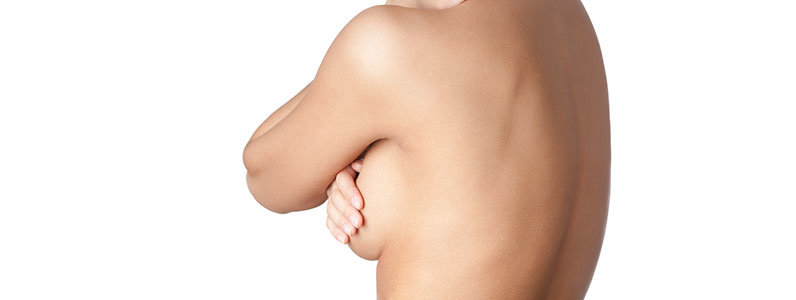
Today’s most advanced breast reconstruction procedure – the DIEP flap – uses a patient’s lower abdominal skin and fat to reconstruct a natural, warm, soft breast after mastectomy. The tissue is transplanted to the chest using microsurgery and is then shaped to form the new breast. Unlike the more widely known TRAM flap procedure which also uses the lower tummy tissue, the DIEP preserves all the abdominal muscles so patients experience less pain, a faster recovery, and have a lower risk of complications with results that mimic a tummy tuck.
Although implants are the most commonly performed method of reconstruction worldwide, the DIEP flap is considered today’s “gold standard” for breast reconstruction.
After a mastectomy, there is little overlying breast tissue to insulate a breast implant. Because of this, patients who undergo implant reconstruction often complain their breasts feel cold. Generally speaking, the less tissue left behind after the mastectomy, the higher the risk of complications after implant-based breast reconstruction. Thin tissue “padding” over the implant can make implant rippling and breast animation (unnatural breast movement when using the chest muscle) more visible. Implants can also harden over time (known as “capsular contracture”). This may become quite painful for a patient and requires additional surgery to correct. Implants can also rupture. Patients must be aware that there is a fair chance their implant(s) will need to be replaced at some point in their lifetime due to these potential implant-related problems.
With DIEP flap reconstruction, patients’ breasts are warm, soft and look natural. DIEP flap breast reconstruction uses the patient’s own tissue, so the reconstruction never needs to be replaced. Sensory nerve reconstruction can also be performed during DIEP flap. This extra step helps restore more feeling to the breast after mastectomy.
Across the board, radiation increases the risk of complications and poor outcomes in breast reconstruction. When radiation is part of breast cancer treatment about 1 in every 3 implant reconstructions fail. The DIEP flap is much safer option with a success rate over 99% in high centers experienced in the procedure.
Of course, all surgery carries risk of complications, but in the hands of an experienced surgeon, this risk is greatly reduced. While many plastic surgeons offer breast reconstruction, relatively few have the special training needed to perform the more complex microsurgical procedures like the DIEP flap.
So, how do you find the right DIEP flap surgeon?
Ask for a recommendation from your breast surgeon or oncologist.
Your breast surgeon or oncologist may have worked with, or previously referred patients to a surgeon in your area who regularly performs DIEP flap breast reconstruction.
Read patient stories and reviews
Speaking with previous patients and reading online reviews is a great way to get insight on a surgeon’s reputation.
Review before and after photos
At your consult, ask to see before and after pictures of his/her DIEP flap results.
Ask if residents or fellows will be assisting or performing any of the surgery.
Training hospitals may use residents or fellows to assist with your surgery. This may not be something you are comfortable with given the expertise needed for the surgery.
Ask surgeon about their experience and complication rates
It is important to choose a surgeon who has completed microsurgical training and has extensive experience performing advanced breast reconstruction procedures like the DIEP flap. Ideally, the surgeon should perform over a hundred DIEP flaps a year with an extremely high success rate. High volume centers like PRMA in San Antonio, Texas have success rates approaching 100%.
Don’t ignore your instincts
Do you research, ask lots of questions, consider all your options and follow your instincts. You are your own best advocate.
Further Reading Related to DIEP Flap Breast Reconstruction
- History of Breast Implants and Breast Enlargement Surgery
- Plastic Surgery Risks and Complications
- SYDNEY – Breast Reconstruction by Dr Michael Kernohan Specialist Plastic Surgeon
- DIEP Flap Breast Reconstruction: What to Expect
- SYDNEY – Augmentation Mastopexy (Breast Lift With Implants) by Dr Jake Lim
